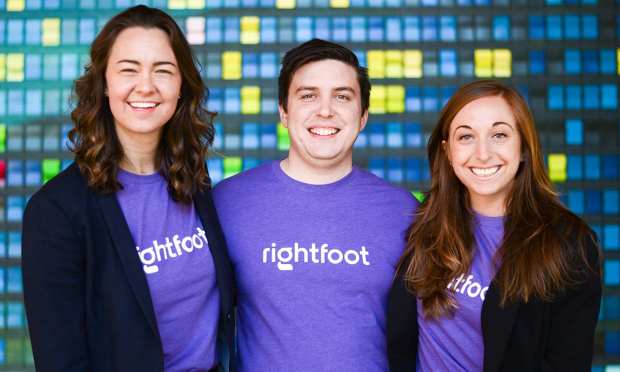Rightfoot Aims To Recreate Infrastructure For Repaying Student Loans

Collectively, Americans owe roughly $1.7 trillion in student loan debt, a figure likely to continue climbing as the cost of education continues to rise alongside the number of students seeking it.
That figure gets no shortage of attention, particularly because so many students are having trouble paying off their share of the debt. According to Pew Research, as of April 2020, 20 percent of student loan borrowers were in default — having gone at least 270 days without making a payment on their loan.
And while there have been proposals around how to fix the looming student debt issue, most overlook a very simple problem, according to Rightfoot Co-Founder and CEO Danielle Pensack. She told PYMNTS that actually making a payment on a student loan can be much harder than it should be. And it’s not because the consumer can’t afford it; it’s because student loan payments lack dedicated payment rails to reach their loan holders.
In fact, she said, it was something that Rightfoot didn’t know when it first entered the business and started selling student loan repayment services to business clients, a B2B2C model similar to Gradifi or Tuition.io. Pensack said she quickly learned that this business model was radically complicated by how difficult it ended up being to simply deliver the payments to the loan companies themselves.
“We kept hitting this student debt repayment wall,” she said. “We found that the companies in this space, a lot of them, were sending checks to the loan servicers. They were bouncing, they’re going to the wrong account. There was really no good way to repay student loans. That infrastructure was really lacking.”
It was time for Rightfoot to take a step back to reconsider what contribution the company could most usefully make to this market. What was more necessary that the student-debt resolution-as-a-service business Righfoot had been building, she said, was a set of digital rails integrated directly with the loan servicers.
And so Rightfoot pivoted to a new purpose, building a set of direct application programming interface (API) integrations with those services so that it was both quick and easy for any developer to add student debt repayment as a function or capability of their application.
“You could think of Rightfoot really as the plumbing that streamlines repayment across this fragmented market of student loans,” Pensack said. “Servicers and companies can use us however they’d like.”
She also noted that as student loans are growing, the demand for Rightfoot’s services is seeing growing interest from both employers and FinTechs in helping consumers better manage their student debt load. The applications the company has seen are clever and, in some cases, pretty out of the box. They include tying student debt repayment to the payroll process, with workers choosing to have payments paid directly from their paycheck and when.
She said has also seen applications that let consumers apply their credit card cash back rewards directly to their student loan. The app creates an infrastructure that can enable student loan micropayments, so that peer-to-peer (P2P) payment app users can leverage it to send a quick $10 to their student loan.
Moreover, she said, Rightfoot’s infrastructure is built to do more than move the payment more efficiently; it also makes the payment itself more transparent and understandable. The firm’s new data sharing partnership with Plaid will give the company a holistic view of a consumer’s student debt situation in its entirety so that its technology can do more than just push their payment to where it should go. It can also be used to help the customer better understand how they should make the payment itself.
“We’re able to basically take the data and turn it into action,” Pensack said. “People today understand their student loans. If they have an application where they’re enabling users to manage their loans, previously there was no way to actually take a recommendation that they might have for consumers and turn that into action. For example, advise them to [put] $30 to [their] highest interest student loan to save $48.19 in interest. Rightfoot enables them to make that recommendation paired with a payment that moves seamlessly from within that application.”
And Rightfoot is thinking bigger and broader in the world of student loan repayment and beyond, she said. The firm has secured $5 million in seed funding, money that will go toward the launch of the self-service developer portal it is currently constructing, as well as the expansion of its integrations with student loan processors.
More broadly, the company is looking beyond student debt and into how it can expand its service to other consumer debt verticals, with credit card debt on the roadmap for 2021, alongside mortgages and auto loans, she said.
Consumers who want to pay shouldn’t struggle to do so, she said. And with better data and better integrations moderated by API technology, no one really has to anymore.
